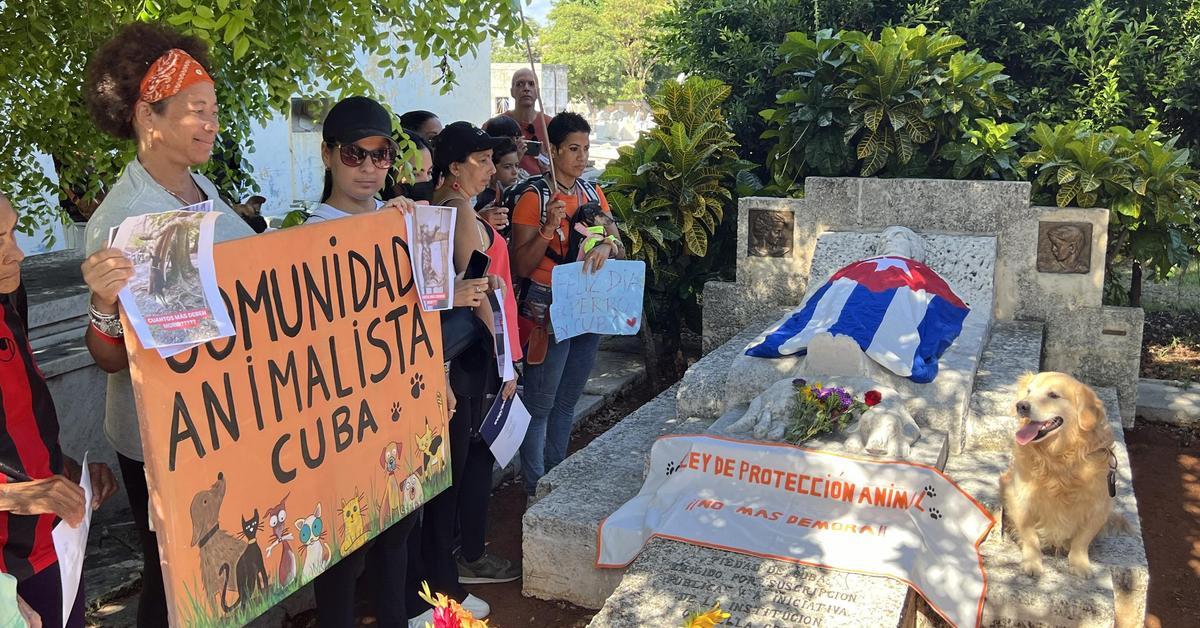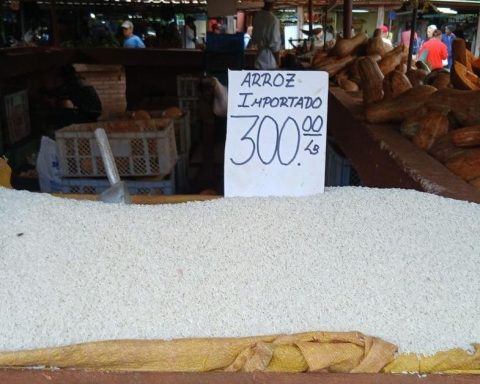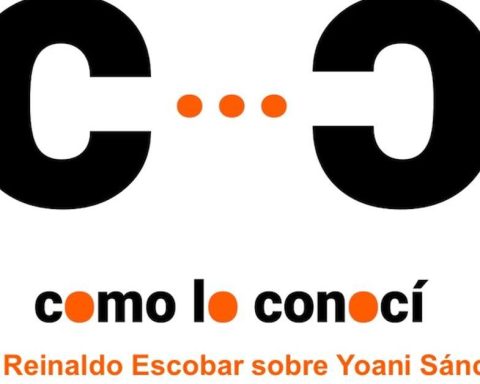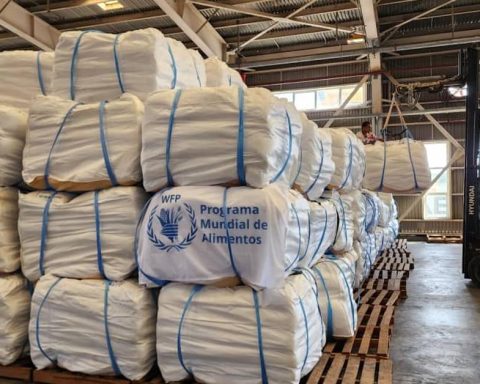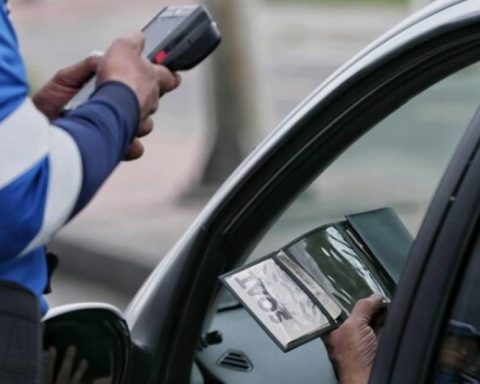Havana/A family finds his dog hanged in the courtyard of a neighbor; Squirrels, hanging and dead, are exhibited as trophies in the fence of a house. A owl is sold for 20,000 pesos for religious rituals, and there are daily cats reported as missing. These are some of the dissimilar complaints of this last month, in a country where a decree law of animal welfare was approved just four years ago.
“We want an animal protection law that is applied and is more severe than the current decree law, which is not enough to reduce animal abuse,” said the Cuban group in defense of animals (CEDA) in their networks this April 13, as part of the day of the dog and summoning the already usual pilgrimage to the tomb of the American philanthropic Jeannette Ryder.
/ 14ymedio
After 9:30 am, the organizers gathered at the entrance of the Columbus Cemetery of Havana to a hundred people who gathered. They go with posters, flowers and photos of abused animals. The cemetery managers gave them a specific schedule and, after the march, they will have to disperse quickly.
The first time this manifestation was carried out in a massive way was In 2019. Then, the Municipal Government of Plaza approved the act, allowing the use of posters and slogans from the Coppelia ice cream to the Colón cemetery, an unprecedented fact. Six years later, the conditions of the march have changed. Less freedoms of expression, greater control of authorities and animals in Cuba remain unprotected.
/ 14ymedio
“There is not a before and after in Cuba for animals with that law,” says Marisol, 47 -year -old animal. “First it has to be more severe, so that you have more respect, and second, you have to fulfill it, because currently the vast majority of abuse that are seen in networks, they are unpunished.”
Marisol believes that most people do not even know the existence of this standard, and that the way of relating to animals has not changed at all. It is thanks to groups such as Ceda, Steps, Aldameros and Aniplant where the importance of animal care and protection is educated and visible. “A law cannot summarize fines in exceptional and viral cases, such as Casablanca’s wife who murdered a cat in everyone’s eyes. Having a dog tied to the roof under the sun is abuse, giving food every two days is abuse. People play with the life of a living being, and all those forms of abuse must be typified and control them.”
/ 14ymedio
Natalia has 10 dogs and three cats. She is a protector since the age of 24, when she picked up her first cat. Now, with 32, he dedicates much of his life to the welfare of animals. “We have no life. If you look at the networks, we are many asking for help. Food expenses, veterinarian, cleaning implements. More and more abandoned animals are the protectors, due among other things to emigration. Most of the shelters are collapsed, and with this crisis, it is an odyssey to keep them.”
The march is a way to make visible the animalist movement, honor hundreds of protectors who do a daily job almost always based on their personal sacrifice and many in an anonymous way, and raise awareness that in Cuba there is animal abuse.
/ 14ymedio
“There is still a lot of work to do,” says Natalia. “Not all human beings have to have responsibility for an animal, but as a society we have to have more empathy. Not abandoning a cat litter in a garbage dump, not kicking a dog down the street, not seeing them with a utilitarian sense, to fight or take care of a house.”
/ 14ymedio
Little less than half an hour hard the pilgrimage and the small act in front of the grave. A few words and several photos, all views with suspicion from distance by several individuals who do not look like protectors. Although the law was already approved, the fabric, on the tomb, says: “Animal protection law. No more delay!”, Because in practice, the protectors feel that little has been done for animal welfare in Cuba.
